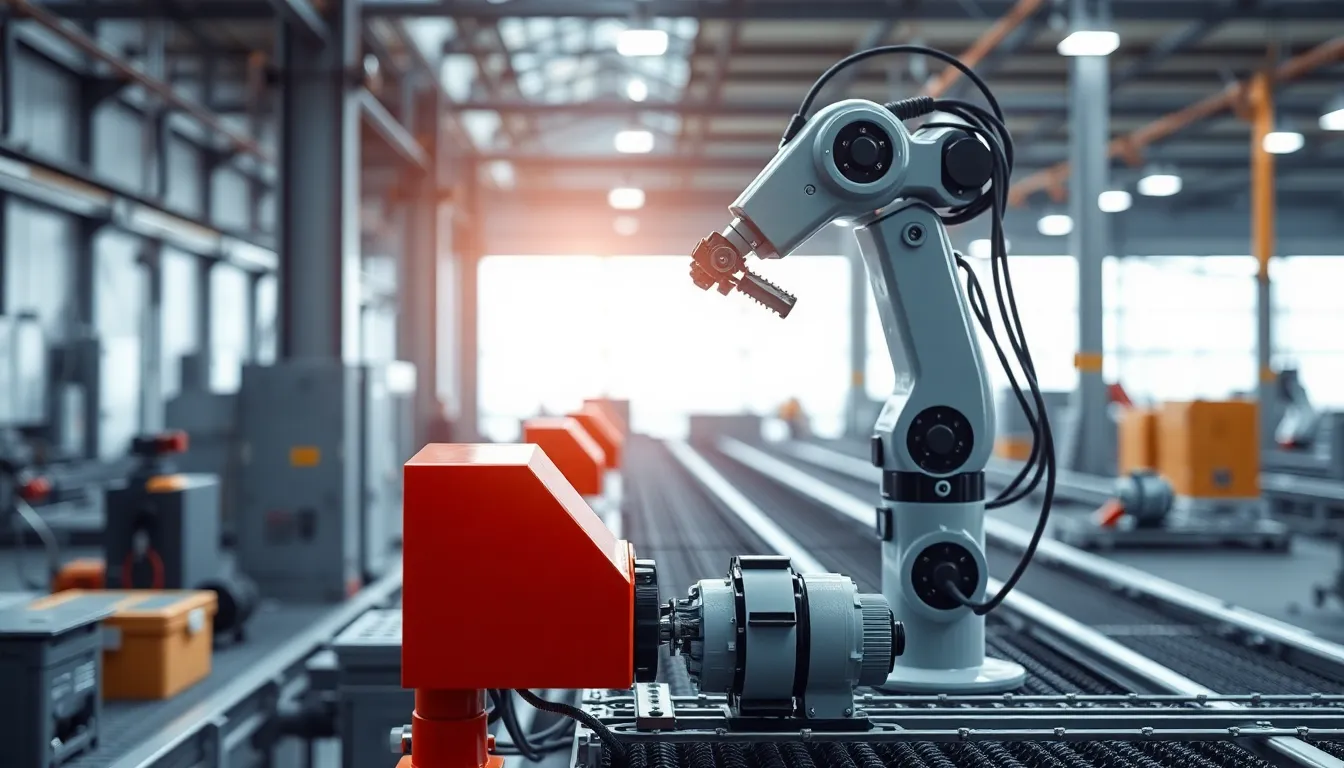The Best Fluffy Pancakes recipe you will fall in love with. Full of tips and tricks to help you make the best pancakes.

Is AI a Robot? Discover the Surprising Truth Behind AI and Robotics
In a world buzzing with technology, the lines between artificial intelligence and robots often blur. Picture this: a shiny robot serving coffee while spouting Shakespearean sonnets. It’s amusing, right? But when it comes to understanding AI, things get a bit trickier. Is AI just a brainy robot or something entirely different?
Is AI A Robot
The distinction between AI and robotics is critical for grasping their individual functions. While both concepts often interlink in discussions, their definitions highlight substantial differences.
Definition of Artificial Intelligence
Artificial intelligence refers to machines designed to perform tasks that typically require human intelligence. These tasks include learning, reasoning, problem-solving, and understanding language. AI is categorized into two forms: narrow and general. Narrow AI excels at specific tasks, like language translation or playing chess. In contrast, general AI aims for broader cognition similar to human intelligence. Machine learning and deep learning are subsets of AI, enabling systems to learn from data and improve over time.
Definition of Robots
Robots are physical machines capable of carrying out a series of actions automatically. They can perform tasks independently or under human control. Robotics encompasses various forms, including industrial robots used in manufacturing and personal robots designed for household chores. Sensors, actuators, and advanced programming allow robots to sense their environment and make decisions. Some robots incorporate AI, enhancing their decision-making abilities, while others function based solely on pre-defined instructions without any intelligent capabilities.
Key Differences Between AI and Robots

Artificial intelligence and robots present distinct characteristics that define their roles. Understanding these differences clarifies misconceptions surrounding both fields.
Functional Differences
AI focuses on processing information and decision-making, enabling machines to perform tasks that typically require human intelligence. Examples of narrow AI include voice assistants and recommendation systems that excel in specific applications. Robots, on the other hand, embody physical machines designed to execute movements and tasks in the real world. They can perform a range of functions from manufacturing assembly lines to household chores. Certain robots implement AI to enhance their operation, allowing them to adapt to changes in their environment. Others may function strictly on pre-programmed commands.
Operational Differences
AI operates through algorithms that analyze data to provide insights or make decisions. This data-driven approach sets it apart from robots, which rely on mechanical or electrical components to carry out physical tasks. Robots often require programming to execute defined operations, and some can operate under human supervision or independently. Conversely, AI has broader operational capabilities and can function in various domains without direct human intervention. The integration of AI into robotics can refine performance, yet many robots lack this capability entirely.
Examples of AI and Robots
Artificial intelligence and robots appear in diverse applications across various sectors. Understanding these examples showcases how AI and robots operate in distinct environments.
AI Applications in Various Fields
AI features prominently in sectors such as healthcare, finance, and entertainment. In healthcare, algorithms assist in diagnosing diseases by analyzing medical images. Finance utilizes AI for fraud detection and risk assessment through data analysis. Customer service benefits from AI-powered chatbots, improving response times and user experience. Autonomous vehicles rely on AI systems to navigate complex traffic situations, enhancing safety and efficiency. These applications demonstrate how AI enriches multiple fields, transforming traditional processes.
Robots in Everyday Life
Robots play essential roles in daily routines, improving convenience and efficiency. Home cleaning robots automate vacuuming, reducing household chores significantly. Industrial robots streamline production lines, increasing manufacturing speed and precision. Delivery drones bring packages directly to customers, enhancing logistics. In healthcare settings, robotic surgical systems assist surgeons with greater precision. Social robots provide companionship and support, especially for elderly individuals. Such examples illustrate the integration of robots into various aspects of life, enhancing productivity and quality of life.
The Future of AI and Robotics
The future of AI and robotics holds immense potential for innovation and ethical challenges. As technology continues to advance, the interplay between AI and robotics will shape various aspects of daily life.
Innovations on the Horizon
Emerging technologies promise remarkable advancements. Autonomous drones are set to revolutionize delivery services, making them faster and more efficient. Robots equipped with AI are expected to enhance manufacturing processes, reducing waste and increasing productivity. AI-driven conversational agents will improve customer interactions, offering personalized services that meet user needs. Innovations in precision agriculture will use AI to boost crop yields while minimizing environmental impact. Developments in wearable robots aim to assist individuals with mobility challenges, allowing for greater independence. These innovations illustrate how AI and robotics can work together to tackle complex problems and enhance human capabilities.
Ethical Considerations
Addressing ethical concerns is crucial as AI and robotics become more integrated into society. Privacy issues arise with AI’s data collection practices, necessitating transparent policies to protect user information. Job displacement poses significant challenges, with automation affecting employment across multiple industries. Ensuring that AI systems operate without bias remains essential to promote fairness. Regulations should guide the development of AI and robotics, preventing misuse and protecting public interests. The deployment of autonomous weapons raises ethical dilemmas, requiring serious deliberation on their implications. By prioritizing ethical considerations, stakeholders can navigate the complexities of AI and robotics responsibly.
Conclusion
Understanding the distinction between AI and robots is crucial in today’s tech-driven world. While they often coexist and complement each other, they serve different purposes. AI focuses on intelligence and decision-making capabilities, while robots handle physical tasks.
As technology continues to evolve, the integration of AI into robotics will likely grow, enhancing capabilities and applications across various industries. However, it’s essential to address the ethical implications that accompany these advancements. By doing so, society can harness the benefits of AI and robotics while ensuring responsible development and deployment.








